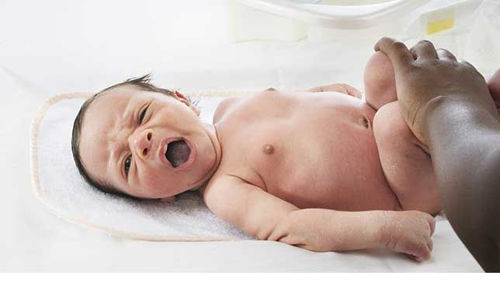When a child gives the impression that he is ill, you should first check to see if he has a fever. Normal body temperature ranges between 36.1 ° C and 37.8 ° C. Body temperature fluctuates depending on the time of day: the highest is around 6pm and the lowest around 4am. A whole range of factors can raise the body temperature by as much as 38 ° C, for example, if a child is playing intensely, sweating heavily, or if he has been dressed too warmly during sleep. Body temperature can also rise after a meal because energy is needed for digestion. If you have a fever in a child, it is best to measure it again in half an hour - he may have only had a short-term rise in body temperature.

I prefer compresses than candles
The body responds with fever to a whole range of causes: for example, inflammation, viral or bacterial infection, impaired water excretion, or after it if it is overheated. Some children get a fever because of the smallness, while others have only a slightly elevated temperature in severe illness. Fever is always a sign that the body is battling a disease. Due to the elevated body temperature, pre-metabolism is accelerated, which prevents the reproduction of pathogens. Therefore, you should not use candles immediately when your child has a fever.
In case of high heat, shaking or almost heat cramps, you must of course reduce the heat - compresses are the first choice. If you want to reduce your child's fever with medication, give him paracetamol and not acetylsalicylic acid - in rare cases, it can cause dangerous Reye's syndrome in children.
How do you measure your body temperature rectally?
For babies up to six months, measure their body temperature in the pelvic orifice, which is called rectal body temperature measurement. Until this age, measurement in the armpits is inaccurate. Putting a mercury thermometer in your mouth is dangerous - it can break and injure a child, and a small child cannot hold a digital one properly in their mouth.
When using the thermometer rectally, lubricate the tip of the thermometer with Vaseline to make it smoother. Measure with a mercury thermometer for three minutes. The rectally measured temperature normally ranges between 36.8 ° C and 37.5 ° C.
Please be careful!
The child should see a doctor when the fever lasts longer than 24 hours. When a baby has a fever above 38.5 ° C, you should see a doctor immediately only he can make a diagnosis, because fever in babies is only one symptom for a whole range of diseases, from colds to life-threatening meningitis.
Lay the baby's body temperature on his back and gently lift his legs. Hold one ankle firmly between your thumb and forefinger and the other between your index finger and the middle finger of the same hand. With the other hand, insert the thermometer into the anus about one centimeter deep. Hold the thermometer correctly if you hold it like a pencil. Doing this with your index finger opens and supports your baby's buttocks to prevent him from injuring himself during a jerky movement.
Measuring body temperature in young children: A small child often defends this, so place it with your belly down in your lap, grip the baby’s legs tightly with your feet, and bend the baby’s upper body over your knee. Hold your head and hands firmly with one hand and insert the thermometer carefully with the other.
Measurement of body temperature in the armpits
In children over the age of six, you can measure your body temperature in your armpits. It is best if the child is lying on his back. Insert the thermometer under the armpit and hold the child's upper arm next to the body so that the thermometer does not fall out.
The measurement with a mercury thermometer takes seven minutes.
The temperature measured under the armpit is about one degree lower than the real body temperature, and usually ranges between 36.2 ° and 36.8 ° C.









